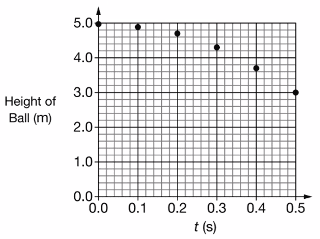
On another planet, a ball is in free fall after being released from rest at time \( t = 0 \). A graph of the height of the ball above the planet’s surface as a function of time \( t \) is shown. The acceleration due to gravity on the planet is most nearly

A pump, submerged at the bottom of a well that is \( 35 \) \( \text{m} \) deep, is used to pump water uphill to a house that is \( 50 \) \( \text{m} \) above the top of the well, as shown to the right. The density of water is \( 1000 \) \( \text{kg/m}^3 \). All pressures are gauge pressures. Neglect the effects of friction, turbulence, and viscosity.
A car travels to right at constant velocity. The net force on the car is
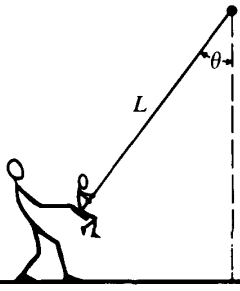
An adult exerts a horizontal force on a swing that is suspended by a rope of length \( L \), holding it at an angle \( \theta \) with the vertical. The child in the swing has a weight \( W \) and dimensions that are negligible. In terms of \( W \) and \( \theta \), determine:
To increase the moment of inertia of a body about an axis, you must
A projectile of mass 0.750 kg is shot straight up with an initial speed of 18.0 m/s.
Two blocks are on a horizontal, frictionless surface. Block \( A \) is moving with an initial velocity of \( v_0 \) toward block \( B \), which is stationary. The two blocks collide, stick together, and move off with a velocity of \( \frac{v_0}{3} \). Which block, if either, has the greater mass?
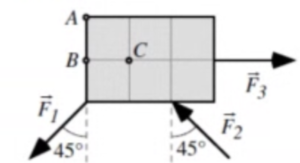
Three forces of equal magnitude are applied to a \( 3 \)-m by \( 2 \)-m rectangle. Force \( F_1 \) and \( F_2 \) act at \( 45^\circ \) angles to the vertical as shown, while \( F_3 \) acts horizontally.
Why do you float higher in salt water than in fresh water?
A block is attached to a horizontal spring. The block is held so the spring is stretched and the block is released from rest, undergoing simple harmonic motion with a frequency of \( 2 \) \( \text{Hz} \). How long after release will the block first reach a point where it is momentarily at rest?
A block of mass [katex] m [/katex] is moving on a horizontal frictionless surface with a speed [katex] v_0 [/katex] as it approaches a block of mass [katex] 2m [/katex] which is at rest and has an ideal spring attached to one side.
When the two blocks collide, the spring is completely compressed and the two blocks momentarily move at the same speed, and then separate again, each continuing to move.
By continuing you (1) agree to our Terms of Use and Terms of Sale and (2) consent to sharing your IP and browser information used by this site’s security protocols as outlined in our Privacy Policy.
Quick Start Guide
AP physics 1, AP C, honors and advanced physics students.
Quickly filter questions by units and more.


Here’s guide to using 5 UBQ filters.
GQ = general question, MCQ = multiple choice, FRQ = free response.

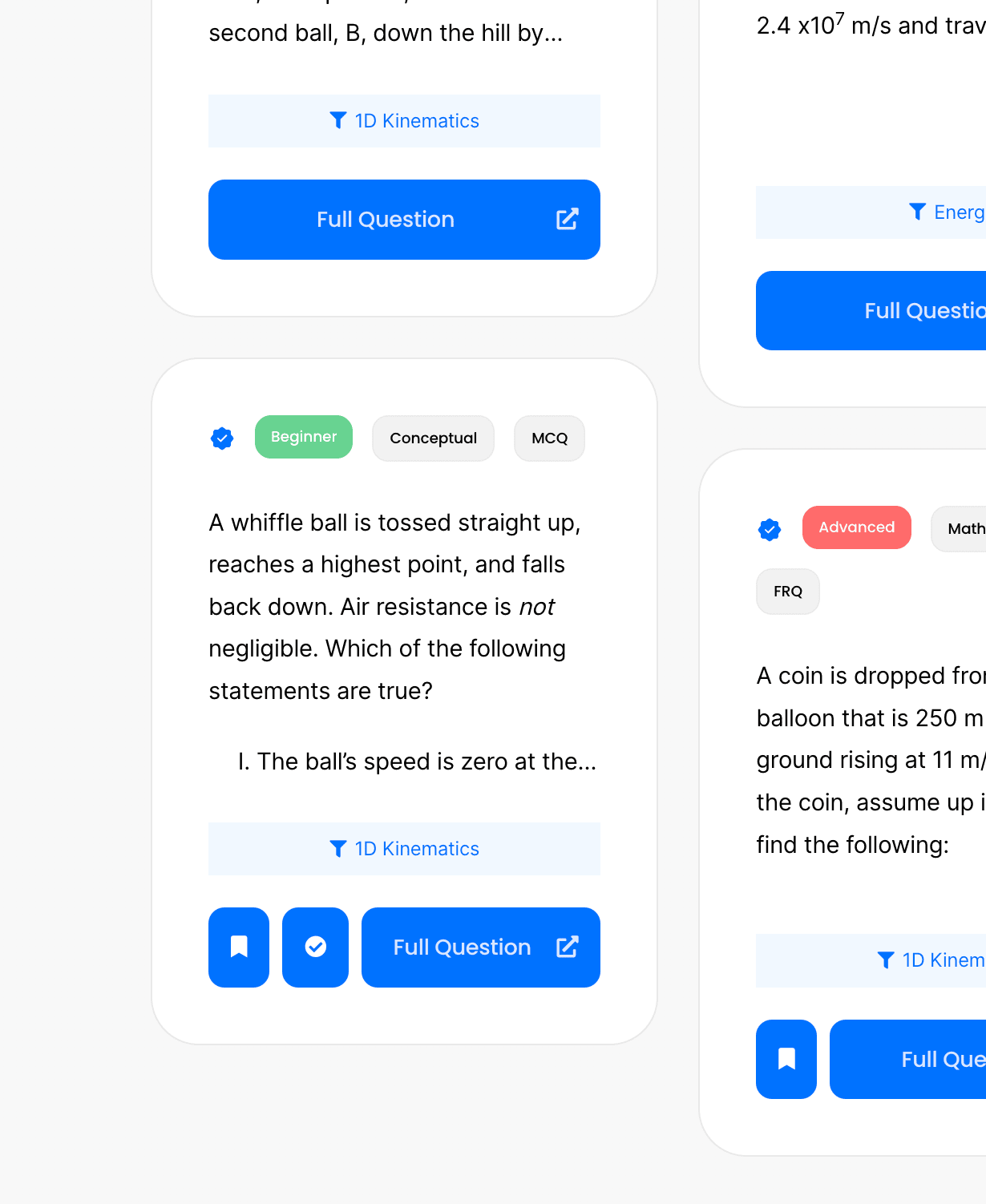
Click the check or bookmark button.
Now you’ll be able to see completed or bookmarked questions at a glance!
Answer keys, personalized for you.

Phy will be responsible for grading your FRQs and GQs.
No more copy and pasting. Just solve and snap.
Questions for Mastery
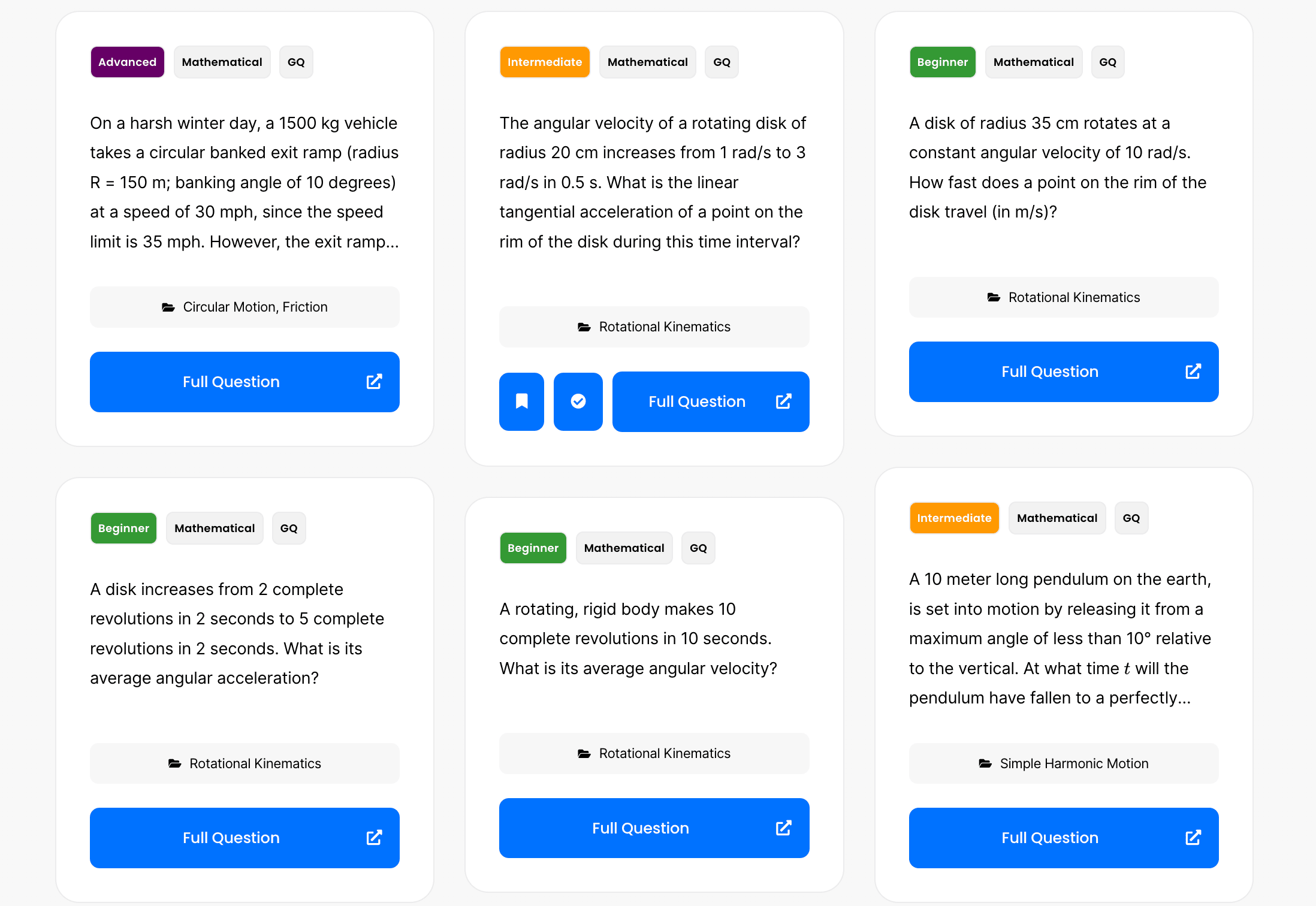
By continuing you agree to nerd-notes.com Terms of Service, Privacy Policy, and our usage of user data.